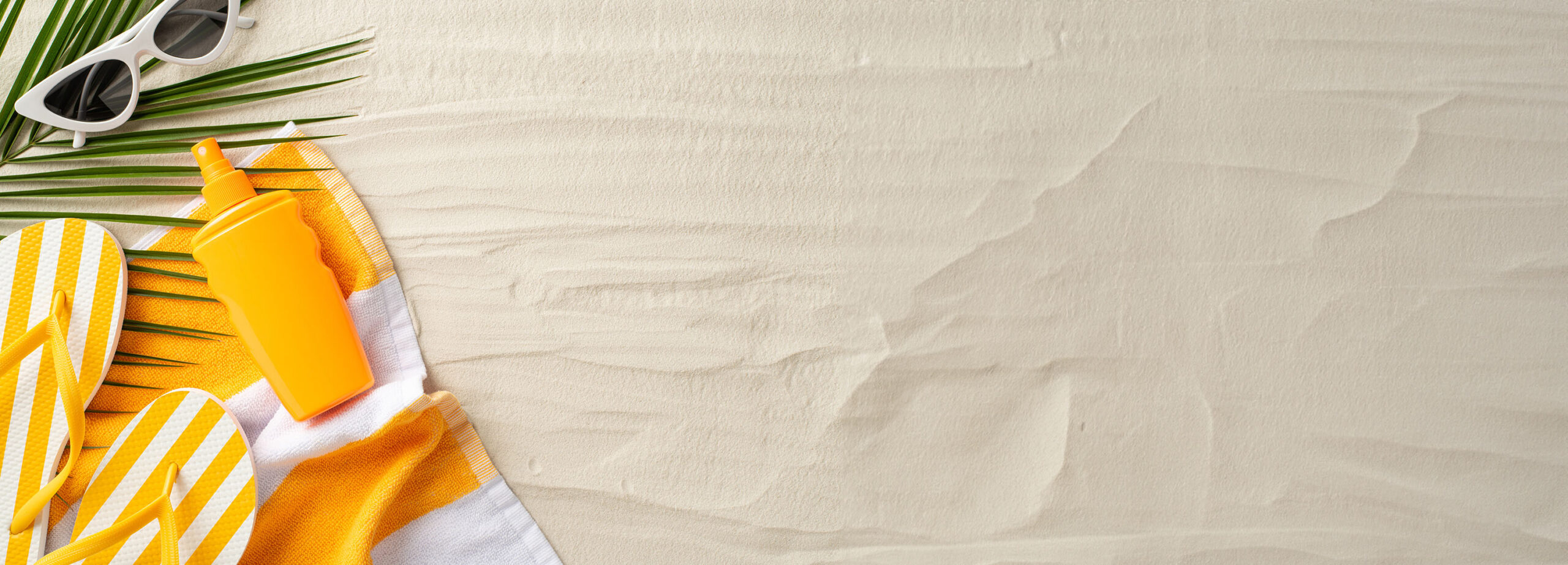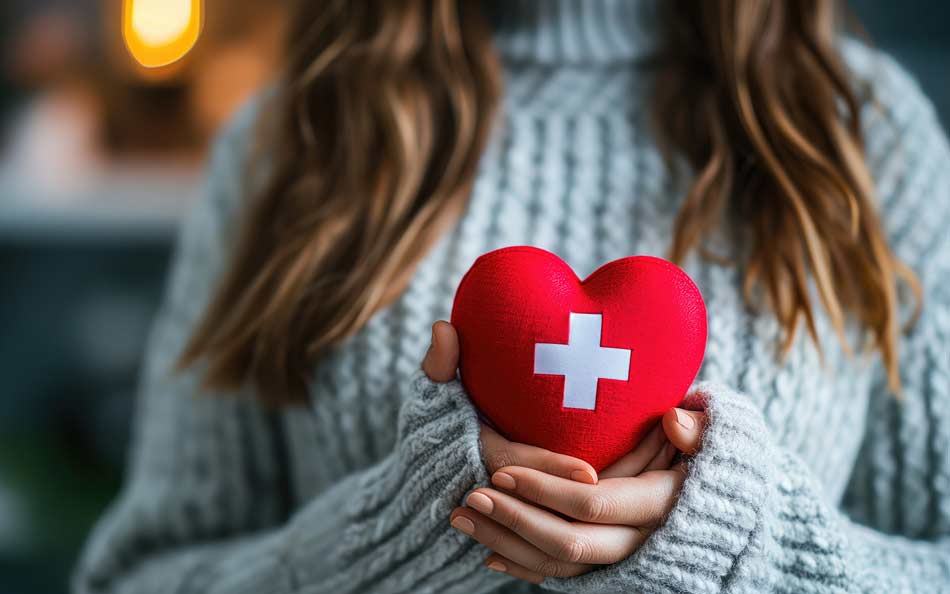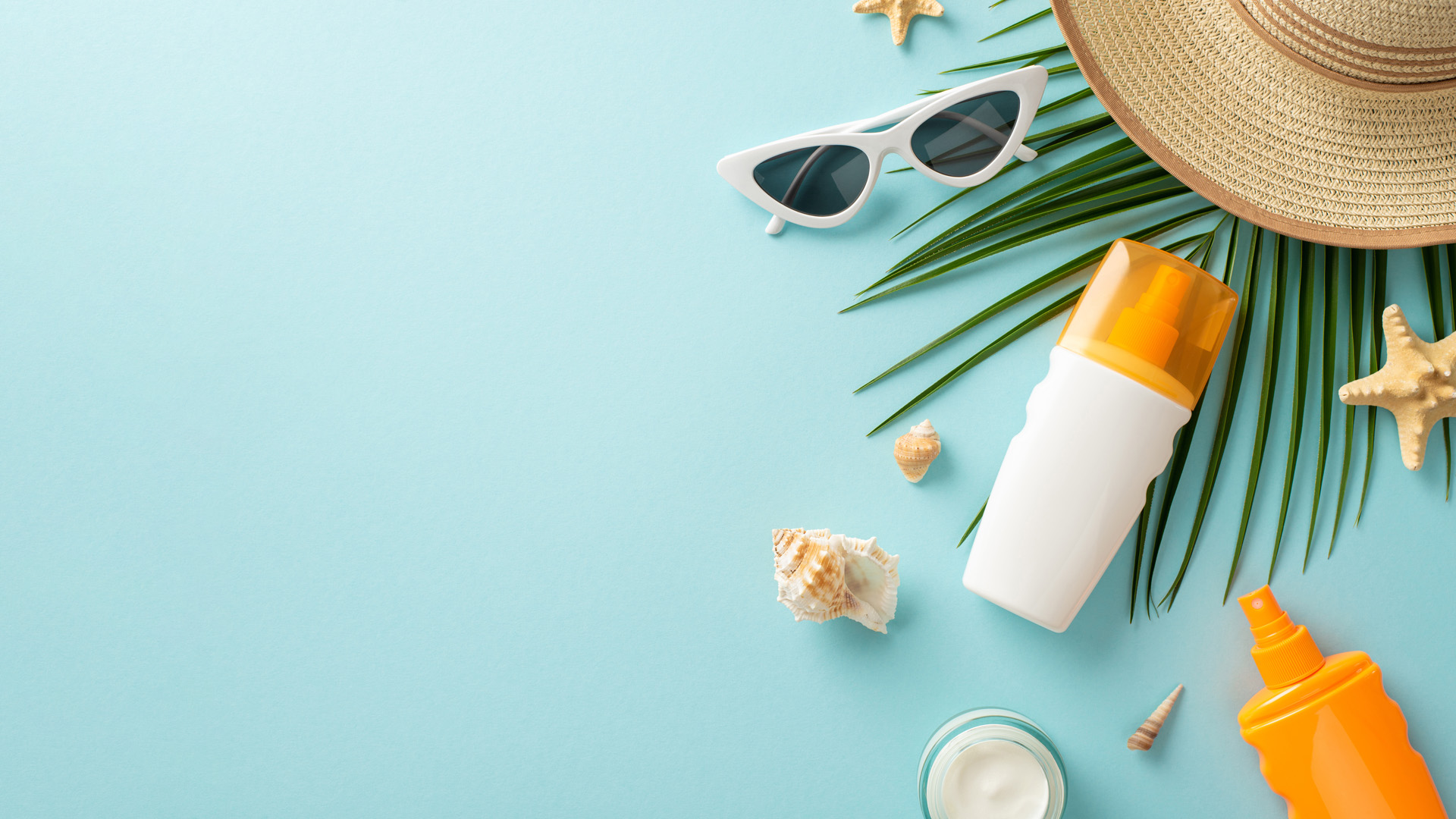
Is It Simple Sunburn—Or Do I Need A Doctor?
July 18, 2023
How To Choose A Proper-Fitting Helmet
September 7, 2023by Susannah Wollman
Many people are not aware that the most common cancer in the United States (skin cancer) is largely preventable. Over a million cases are reported each year. By understanding sun safety and taking simple steps, you can enjoy your time in the sun without becoming a statistic.
Today, most people realize that the sun can damage your skin. But how? And why?
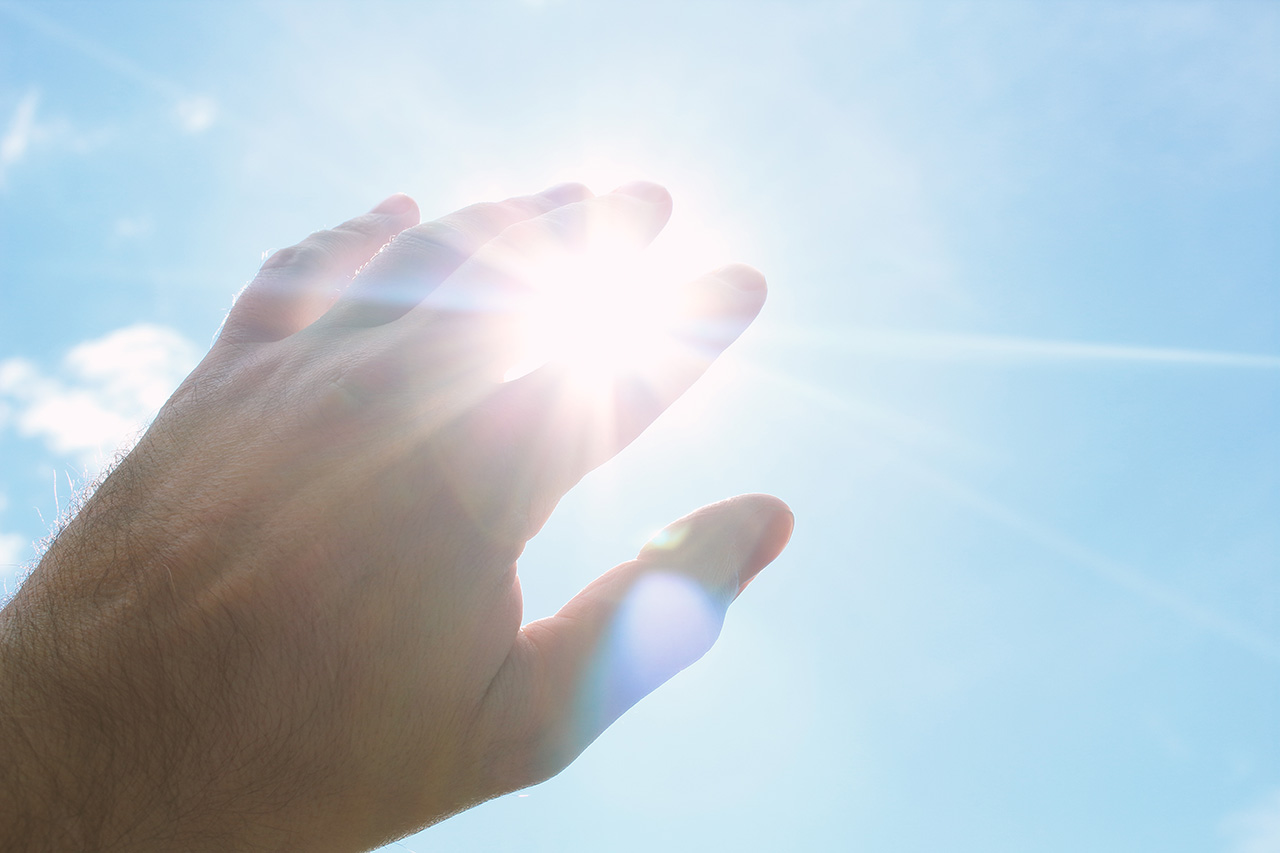
What UV radiation really does to your skin
Do you know what UV radiation is? The sun emits ultraviolet (UV) waves that are classified into three kinds: UVC, the shortest wavelength has the highest energy and is completely absorbed or blocked by the earth’s atmosphere’s ozone layer; UVB, medium wavelength and energy, is mostly absorbed by the ozone layer; and UVA, the longest wavelength with the lowest energy is not absorbed by the ozone layer.
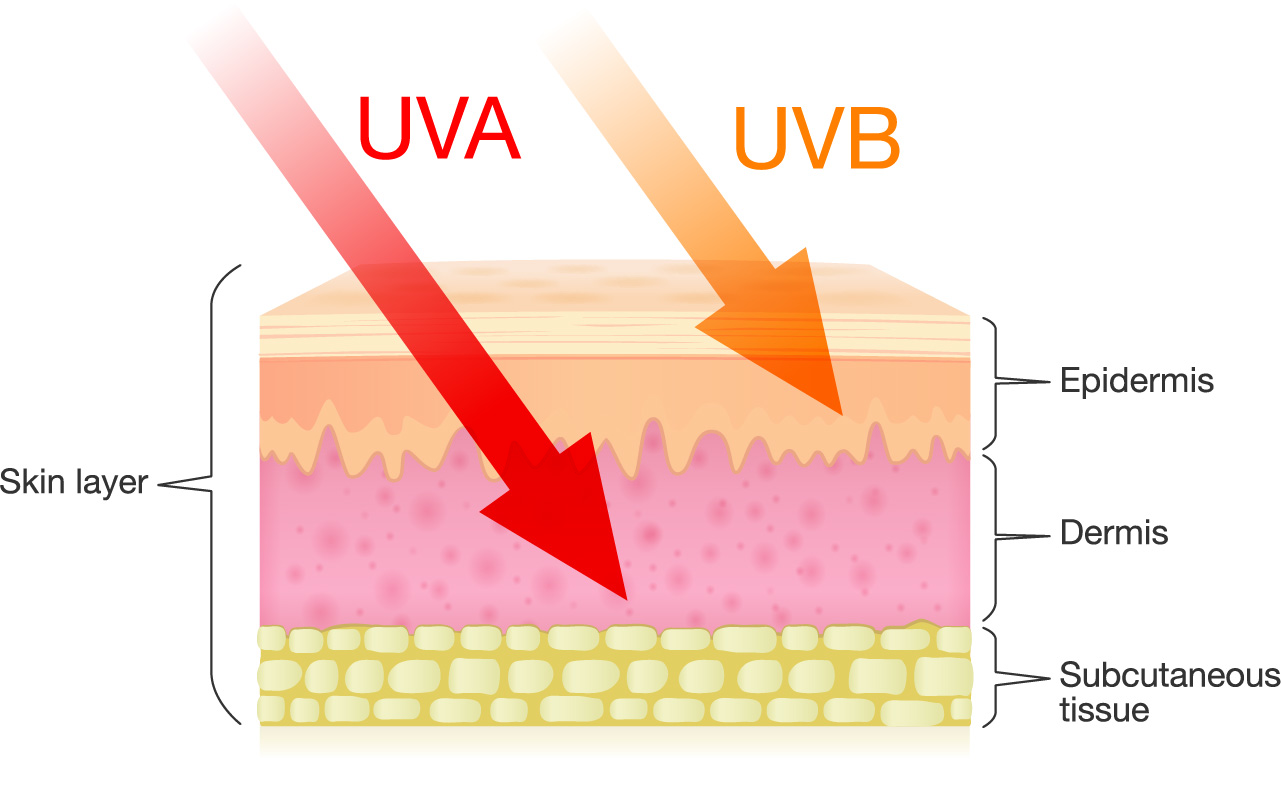
How UV radiation harms skin
Our skin has a complex relation with the sun.
Acute (rapid onset) responses:
- Sunburn
- Photodamage
- DNA mutation
- Immunosuppression
- Vitamin D synthesis
- Tanning
Chronic (continuing, long duration) responses:
- Skin cancer
- Photoaging

So what does that mean?
UVB radiation
Since the early 1900s, scientists have recognized the correlation between exposure to the sun and skin cancer. It didn’t take long until UVB rays were linked to sunburn. This, they thought, was the sole cause of skin cancer. Fortunately, this knowledge spurred the development of sunscreen. Unfortunately, they still thought that tanning that did not lead to a sunburn was healthy.
The reason this idea was unfortunate is because we now know that even suberythemal levels (meaning doses that do not produce a sunburn) of UVB rays cause immediate changes in the skin’s DNA.
Let’s look at some of the other UVB radiation effects in more detail.
Immunosuppression—this prevents the immune system from appropriately responding to all of the chemical byproducts that ultraviolet radiation creates. This may help prevent autoimmune diseases, but it also makes it easier for skin cancer to develop.
Formation of Vitamin D—UVB rays cause the body to develop Vitamin D, which is an essential vitamin for health. A complex series of chemical reactions that begin in the epidermis (the outermost layer of the skin) and end in the liver produces Vitamin D. So, some exposure to UVB radiation is good. This calls for wisdom in striking a balance between sun safety and exposure. More about this later.
UVA radiation
By the early 20th century, scientists had linked UVB rays to sunburn and skin cancer, but it wasn’t until the 1970s that UVA radiation effects were beginning to be understood. They discovered that UVA radiation penetrate deeper than the epidermis to reach into the dermis. These damaging rays generate reactive oxygen species (ROS) that are chemical reactions in our skin that create highly unstable molecules. These rogue molecules seem to want to bond with other molecules, creating a host of problems and interfering with normal cell function.
A healthy body has complex systems that manage and mitigate the effect of ROS, but stress, excess sun exposure, poor diet, lack of sleep, etc., overwhelm these systems and they can’t function appropriately. The destructive ROS molecules can break the double-helix structure of DNA and can cause non-DNA proteins to bind to DNA. These are called DNA protein crosslinks (DCPS), which distort the DNA, preventing it from replicating properly. These mutations cause structural and functional problems, including cancer.

The truth about sunscreen
We told you that sunscreen was developed in the early 1900s. Since then, many myths about sunscreen have developed. Here are some you can discard.
- You only need sunscreen when your entire body is exposed to sunlight. False.
Ultraviolet light is harmful to exposed skin, even if it’s just a little bit of skin that is exposed. Make sure your exposed skin—like your lower arms and face—have protection, too. - Sunscreen isn’t necessary on cloudy days. False.
Just because the sun doesn’t feel as strong as usual doesn’t mean you aren’t receiving ultraviolet radiation. - Sunscreen will prevent your body from making Vitamin D. Partly false.
If you completely covered your body (even the parts covered by clothing), you might find some truth in that. However, UV rays penetrate clothing and sunscreen wears off. Scientists have found that as little as 5 to 30 minutes a day is enough exposure for the body’s needs, and you will still receive enough even wearing protective clothing and sunscreen. - Sunscreen causes health problems. False.
An old study on oxybenzone, one of the active ingredients in many sunscreens, found that rats exposed to high levels of oxybenzone experienced serious side effects. However, the researchers noted that the levels of oxybenzone were extremely high, and after 40 years, there are no published studies that show toxic effects in humans even in those who use sunscreen liberally and regularly. You can read about that here. - People with dark skin don’t need sunscreen. False.
While research does show that people with more melanin in their skin do not burn as easily as those with lighter skin, they are still subject to the damage that ultraviolet light causes. In fact, one study showed that people with darker skin had a lower skin cancer survival rate. - Sunscreen is the only protection you need from the sun. False again.
In fact, that is exactly opposite to the truth. Sunscreen provides protection provided you reapply it frequently, but clothing is much better protection than sunscreen. Long sleeves and a wide brimmed hat beat out sunscreen for keeping the UV rays from harming your skin. - One application of sunscreen is good for the whole day. False.
Believe it or not, light itself causes sunscreen to break down and lose its effectiveness after only a short time. Reapply sunscreen every two hours and after being in the water. - Sunscreen is waterproof. False.
As stated above, as soon as you come out of the water, you need to reapply sunscreen. And wait 10 to 15 minutes after applying sunscreen before entering the water. - Sunscreen never expires. False.
The ingredients in sunscreen break down over time, and using expired sunscreen does your skin no good at all.
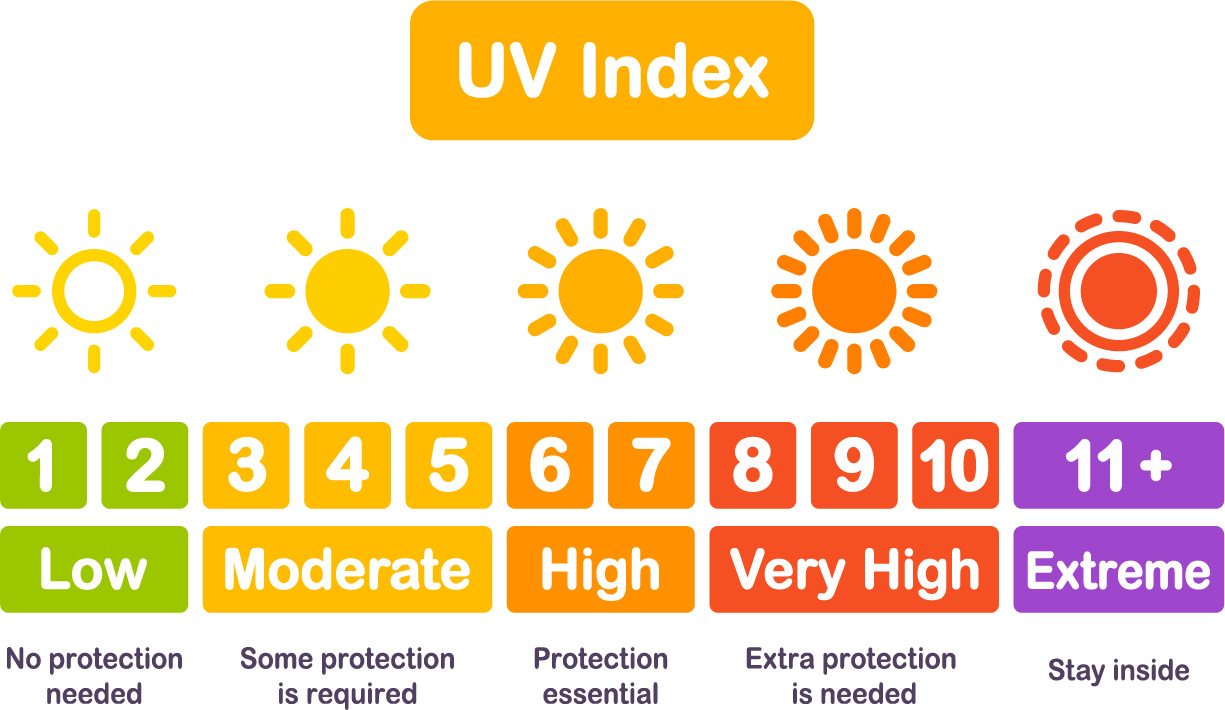
The best tool for knowing when UV radiation is strong
Your best friend in your fight to keep your skin and body healthy is the US EPA UV Index. According to the EPA, “the UV Index provides a forecast of the expected risk of overexposure to UV radiation from the sun. The National Weather Service calculates the UV Index forecast for most ZIP codes across the U.S., and EPA publishes this information. The UV Index is accompanied by recommendations for sun protection and is a useful tool for planning sun-safe outdoor activities.
Ozone depletion, as well as seasonal and weather variations, cause different amounts of UV radiation to reach the Earth at any given time. Taking these factors into account, the UV Index predicts the level of solar UV radiation and indicates the risk of overexposure on a scale from 0 (low) to 11 or more (extremely high). A special UV Alert may be issued for a particular area, if the UV Index is forecasted to be higher than normal.”
You can download a UV Index Mobile App that will give you the forecast right on your phone.



